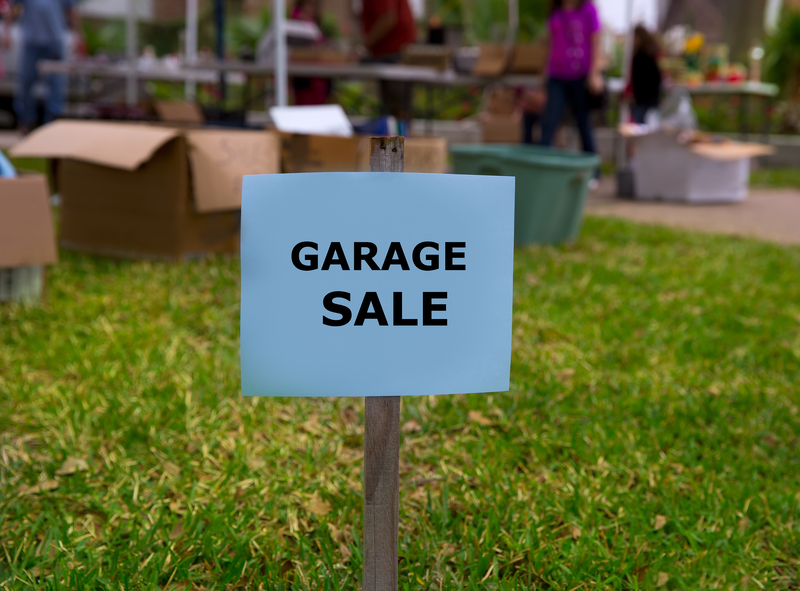Reduce Dangerous Household Waste: Practical Advice
Posted on 19/06/2025
Household waste poses a significant issue for the environment and public health. Many day-to-day items that seem harmless can, in fact, be highly toxic and hazardous. Reducing dangerous household waste doesn't just protect the environment, it also creates a safer living space. This article provides practical advice on how to minimize the production of harmful waste from everyday household activities.
Understanding Dangerous Household Waste
Dangerous or hazardous household waste includes items that can cause significant harm either through their natural state or when they are not disposed of properly. Common examples include batteries, electronics, paints, cleaning products, and pesticides. These items can leak dangerous chemicals into the environment, contaminate water supplies, and harm wildlife.

Key Strategies to Reduce Dangerous Household Waste
1. Avoid Single-Use Items
Single-use items, often made of plastic, contribute significantly to household waste. Plastic can leach harmful chemicals and can take hundreds of years to decompose. By avoiding items like single-use water bottles, utensils, and straws, you reduce the potential for adding harmful substances to the waste stream. Opt instead for reusable alternatives.
2. Correct Disposal of Electronic Waste
Electronic waste or e-waste includes old smartphones, laptops, televisions, and other electronic devices. E-waste contains harmful substances such as lead, mercury, and cadmium. Proper disposal through recycling programs ensures that these materials don't end up in landfills, where they can leak dangerous chemicals. Recycling not only prevents environmental contamination but also allows valuable materials to be recovered and reused.
3. Opt for Eco-Friendly Cleaning Products
Traditional cleaning products can contain harmful chemicals like ammonia and chlorine. These substances can cause respiratory issues and contaminate water supplies when washed down drains. Switching to eco-friendly cleaning products or making DIY cleaners with natural ingredients such as vinegar, baking soda, and lemon juice can significantly reduce harmful waste.
Reduce, Reuse, and Recycle
These three principles form the cornerstone of sound waste management practices for minimizing harmful waste.
1. Reduce
The most effective way to manage hazardous waste is to prevent its creation. Reduce waste by buying products with less packaging, choosing bulk items, and avoiding products that contain hazardous materials. Pay attention to labels and opt for items with eco-friendly certifications.
2. Reuse
Before you throw something away, consider if it can be reused or repurposed. For example, glass jars can be used for storage, and old textiles can be turned into cleaning rags. Regularly seek out alternatives to trashing items by donating or upcycling them.
3. Recycle
Recycling is critical in managing household waste responsibly. Materials like glass, paper, and certain plastics can be recycled and turned into new products. Check your local recycling guidelines to ensure you are recycling correctly to avoid contaminating recyclables with non-recyclable waste.
Safe Disposal of Household Hazardous Waste
1. Follow Local Regulations
Different communities have different regulations for disposing of household hazardous waste. Familiarize yourself with local guidelines to ensure dangerous items are disposed of correctly. Many areas offer designated drop-off points or specific disposal days for hazardous materials.
2. Use Hazardous Waste Collection Programs
Many communities offer programs for the collection and safe disposal of hazardous household waste. These are typically free or low-cost services provided by local governments. Utilize these programs for items like paint, cleaners, and batteries.
3. Donate or Share Usable Items
If you have usable items like paint, cleaning supplies, or other chemicals, consider donating them to schools, non-profit organizations, or community groups that could use them. This prevents waste and benefits others.

Additional Practical Tips
1. Purchase Energy-Efficient Appliances
Energy-efficient appliances tend to have longer lifespans and are often recyclable. When it's time to upgrade, look for ENERGY STAR-rated appliances. These consume less energy and often have parts that can be recycled, lowering their environmental footprint.
2. Practice Safe Storage
Store hazardous materials in their original containers with labels intact and placed in a secure location away from children and pets. This ensures that these substances are handled and disposed of properly when the time comes.
3. Educate Your Household
Inform everyone in your household about the importance of reducing dangerous waste. Teach them how to recognize hazardous materials and the proper ways to dispose of them. Engage in regular conversations about waste management to keep everyone informed.
Conclusion
Reducing dangerous household waste is essential for protecting the environment and ensuring the safety of your home. By integrating practices like proper disposal, opting for eco-friendly products, and adhering to the principles of reduce, reuse, and recycle, you can significantly minimize the negative impact your household has on the environment. Remember, small changes can make a big difference. Implement these strategies gradually to create a sustainable and safe living space for you and future generations.

